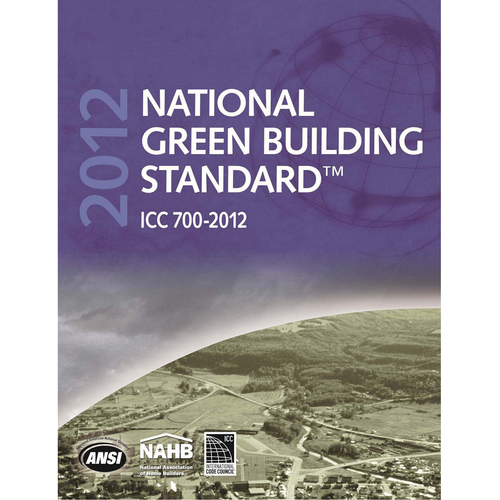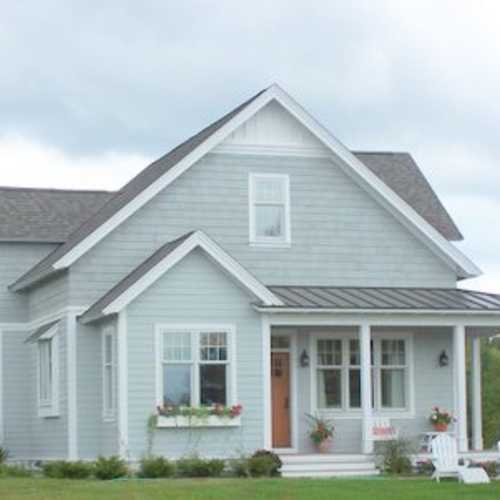In the past, I have been critical of the NAHB’s National Green Building Standard (NGBS), just as I have been of most other green building programs. While I don’t expect to lose my critical eye, I do believe I have mellowed a bit and developed new opinions about the certification process and each program’s role in the industry.
I recently obtained a copy of the new 2012 NGBS and have reviewed it fairly thoroughly. My clarifying questions were answered very promptly by the nice folks at Home Innovation Research Labs (formerly known as the NAHB Research Center). Now I don’t know about their new acronym (HIRL?), but they were goodnatured when I commented about it on Twitter recently.
What’s new and different?
There has been a noticeable leap in energy efficiency from the 2008 version, based on the fact that the standard now requires a home be at least 15% more efficient than the 2009 IECC. Certification now requires a Manual D duct design for forced-air HVAC systems. It’s also necessary to follow a list of required air-sealing measures that appear to be lifted directly from the IECC, and to install insulation at Grade 2 or better installation quality.
Vent-free fireplaces are no longer allowed, and wood-burning units must have doors and a source of outside combustion air. Radon mitigation is required in homes located in Zone 1. And a long list of flashing and exterior moisture management measures are required, although kick-out flashing is still optional.
Although it is not explicitly stated in the standard, any HVAC ducts located outside the conditioned space must be tested for leakage, per the 2009 IECC. Whole-house ventilation meeting ASHRAE 62.2 is required if a home or apartment tests out tighter than 5 air changes per hour at 50 Pascals (5 ach50), but since there is no requirement for blower-door testing, this seems to be to be a bit of a loose end in the program.
As before, you can meet the energy-efficiency section requirements using either the prescriptive path (by incorporating a specific list of measures) or the performance path (by preparing a HERS rating or following an equivalent energy model). Interestingly, since testing isn’t required, you can complete the energy model using the following defaults values: envelope Specific Leakage Area (SLA) of 0.00036 and duct system efficiency 0.88 if all the ducts are in conditioned space (if they are not, they need to be tested as noted above).
On the administrative side, they finally abandoned their clunky online scoring tool in favor of an Excel spreadsheet that appears to work well and be fairly easy to understand.
Existing homes are addressed as well
Under the new standard, there are two separate sections for certifying renovations. Chapter 11 covers whole house (or multifamily building) renovations, which applies to any existing building as long as any additions do not exceed 75% of the original above-grade finished space. If the addition exceeds the 75% threshold, then it must be certified as new construction.
Projects must meet minimum energy and water efficiency levels, plus gain enough points in other areas to meet certification. A scoring checklist for existing buildings will be available soon.
New in this version is the ability to certify sections of buildings such as kitchens, bathrooms, and basements. These certifications do not use any scoring system; rather, the project must meet all the applicable requirements listed in the standard for that project.
This project-based approach runs the risk of having a so called “green” kitchen or bathroom in an otherwise poorly performing house, but interestingly, they have set a fairly high bar, requiring the use of a certain number of bio-based products, certified wood, and the preparation of a life-cycle analysis for a product or assembly.
In some ways, this non-score based certification may be more complicated to meet than it first appears.
Don’t worry, I still have some complaints
I still wish the new standard required blower-door testing. The lack of a testing requirement was one of my key complaints about the 2008 standard, and I had sincerely hoped that it would have been required in the new version.
I also have concerns about the rigor and quality control over the program verifiers. While I acknowledge that HERS and LEED providers don’t do a perfect job of quality assurance (QA) on their raters, there are regular on-site visual verifications that the rater’s work meets certain minimum requirements.
HIRL reserves the right to inspect any verifier’s work, but there is no regular schedule or requirement for this, leaving open opportunities for less rigorous certification, and in extreme cases, the possibility that verifiers will certify buildings that should not qualify.
Not half bad
Even though it doesn’t require air leakage testing and the verifier QA process could be stronger, I have come to the conclusion that there is a place for a certification program with an easier entry level, one that is broader and more inclusive than LEED and other, more rigorous options.
What I find most exciting about the standard is that it is making strong inroads into the multifamily market, as are most residential programs. Market-rate developers who may not be willing to invest in more costly certifications are using the NGBS for their projects.
One of my favorite things about the 2012 NGBS is that it is phasing in quickly – after May, all projects must register under the 2012 version and the 2008 version will go away. In contrast, LEED Version 4, which is expected to be released in late 2013 is planned to run parallel to the current version for as long as three years, allowing project teams to select either version for many years to come.
In this case, I think HIRL made the right choice by tearing off the bandage quickly. It does seem to me that some of what I predicted in my Green Building Program Roadkill Post is coming to pass. It will be interesting to see how it all ends up.
Weekly Newsletter
Get building science and energy efficiency advice, plus special offers, in your inbox.
















One Comment
Blower door testing
Carl:
Your #1 concern would have been addressed if they had simply referenced the 2012 IECC instead of the 2009 + 15%.
Log in or create an account to post a comment.
Sign up Log in